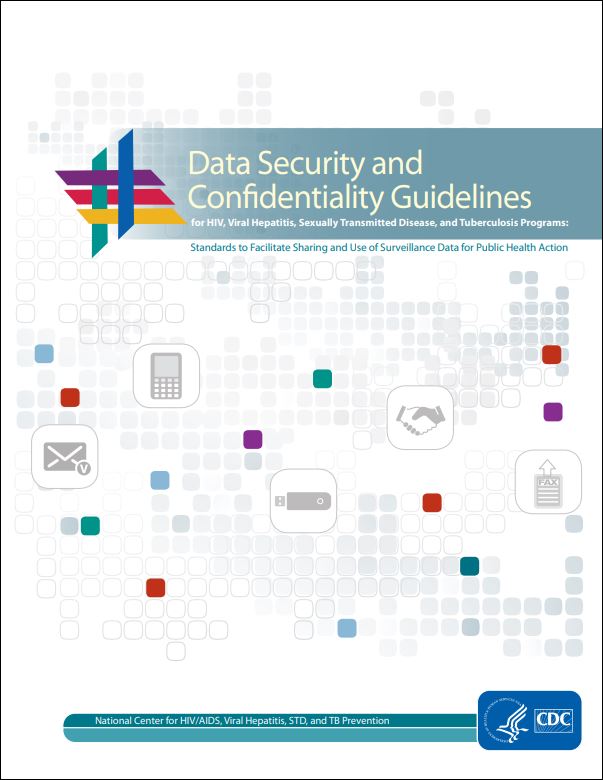Data Security and Confidentiality Guidelines for HIV, Viral Hepatitis, Sexually Transmitted Disease, and Tuberculosis Programs: Standards to facilitate sharing and use of surveillance data for public health action

Citation: Centers for Disease Control and Prevention. Data Security and Confidentiality Guidelines for HIV, Viral Hepatitis, Sexually Transmitted Disease, and Tuberculosis Programs: Standards to Facilitate Sharing and Use of Surveillance Data for Public Health Action. Atlanta (GA): U.S. Department of Health and Human Services, Centers for Disease Control and Prevention; 2011
Abstract: A goal of CDC’s National Center for HIV/AIDS, Viral Hepatitis, STD, and TB Prevention (NCHHSTP) is to strengthen collaborative work across disease areas and integrate services that are provided by state and local programs* for prevention of HIV/AIDS, viral hepatitis, other sexually transmitted diseases (STDs), and tuberculosis (TB). A major barrier to achieving this goal is the lack of standardized data security and confidentiality procedures, which has often been cited as an obstacle for programs seeking to maximize use of data for public health action and provide integrated and comprehensive services. This document recommends standards for all NCHHSTP programs that, when adopted, will facilitate the secure collection, storage, and use of data while maintaining confidentiality. Designed to support the most desirable practices for enabling secure use of surveillance data for public health action and ensuring implementation of comprehensive evidence based prevention services, the standards are based on 10 guiding principles that provide the foundation for the collection, storage, and use of these public health data. They address five areas: program policies and responsibilities, data collection and use, data sharing and release, physical security, and electronic data security. Intended for use by state and local health department disease programs to inform the development of policies and procedures, the standards are intentionally broad to allow for differences in public health activities and response across disease programs.
Author(s): National Center for HIV/AIDS, Viral Hepatitis, Sexually Transmitted Disease and TB Prevention
Year: 2011
Language: English
Resource Type: Guidance and Tools
Source: Other
Filed under: confidentiality, data security, Guidance and Tools, Public Health, Surveillance, tb progroms
